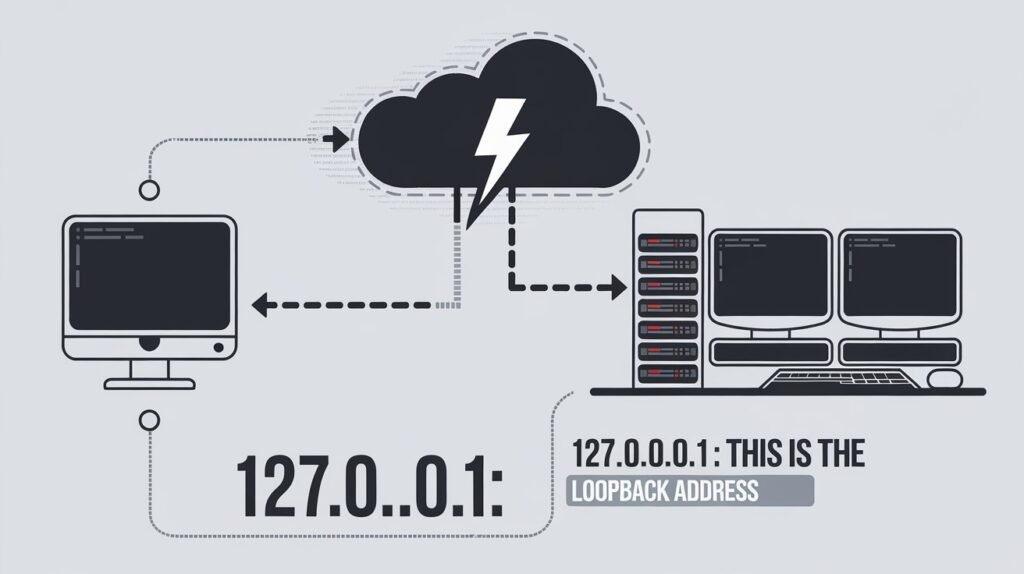Explore everything about 127.0.0.1:49342 in this detailed guide, including its meaning, uses in networking, troubleshooting, and frequently asked questions.
Introduction
If you’ve worked with network configurations or web development, you may have come across terms like 127.0.0.1:49342. But what exactly does this combination mean, and why is it significant? This IP address and port number pair is an essential part of networking, especially for developers and IT professionals.
Table of Contents
This guide will cover what 127.0.0.1:49342 means, its uses, how to troubleshoot common issues, and other frequently asked questions.
What is 127.0.0.1?
Before diving into the specifics of 127.0.0.1:49342, let’s break down each component.
Understanding 127.0.0.1 – The Loopback Address
In networking, 127.0.0.1 is known as the “loopback address” or “localhost.” When you point to 127.0.0.1, you’re referring to the same device you’re currently using, essentially creating a shortcut to access local resources. This IP address is part of the IPv4 loopback range (127.0.0.0 to 127.255.255.255), which is reserved for testing network software without needing an external network connection.

Common Uses of 127.0.0.1:
- Testing and Development: It allows developers to test applications locally without affecting the broader network.
- Troubleshooting Network Issues: The loopback address can help diagnose network problems by verifying if a system’s networking stack is functioning properly.
- Internal Communication: Used for applications that need to communicate with other software or services on the same device.
How 127.0.0.1 Differs from Other IPs
Unlike external IP addresses that connect you to the wider internet, 127.0.0.1 is strictly internal. It’s only accessible on the device itself, which means you can use it without security concerns regarding external access.
What Does Port 49342 Represent?
In networking, ports are communication endpoints. Each port has a unique number assigned for different services and applications to facilitate data transmission. Ports are categorized as follows:
- 0–1023 (Well-known Ports): Reserved for system processes and widely-used protocols (e.g., HTTP, FTP).
- 1024–49151 (Registered Ports): Assigned for specific services or applications.
- 49152–65535 (Dynamic or Private Ports): These ports are typically used for temporary communications, assigned by the system when needed.

49342 is a dynamic port, often used by applications or services for temporary communication. It’s randomly assigned and is not reserved for any specific protocol or application, making it versatile for various purposes.
What Does 127.0.0.1:49342 Mean?
When we combine 127.0.0.1 (the loopback address) with port 49342, we get 127.0.0.1:49342, a specific address-port pair that allows communication to occur locally.
Use Cases for 127.0.0.1:49342
- Local Testing and Development: Developers often use 127.0.0.1 with a dynamic port like 49342 to test applications locally without interfering with production systems.
- Internal Network Services: Some network services or processes may use 127.0.0.1:49342 for internal communication.
- Troubleshooting: IT professionals use local IP and dynamic ports to diagnose network issues or monitor the performance of specific applications.
By using 127.0.0.1:49342, developers can create a secure, isolated testing environment on their machine.
How to Use 127.0.0.1:49342 for Testing and Development
- Setting Up a Local Server:
- Many programming languages and frameworks support setting up local servers on specific IP-port pairs like 127.0.0.1:49342. For instance, a Python Flask application can run on this address and port for testing purposes.
- Accessing Services Locally:
- To access a web application hosted on 127.0.0.1:49342, open your browser and enter http://127.0.0.1:49342. This redirects the request internally to your machine.
- Application Debugging:
- Dynamic ports, such as 49342, allow flexibility in testing and development. If an application requires a dedicated communication channel, 127.0.0.1:49342 serves as a useful endpoint for local interactions.
- Using Tools for Network Monitoring:
- Tools like
netstat, Wireshark, and TCPView can help monitor connections on 127.0.0.1:49342, giving insight into which processes are using the local address and port.
- Tools like
Troubleshooting Common Issues with 127.0.0.1:49342
If you encounter issues when using 127.0.0.1:49342, there are a few troubleshooting steps to consider:
1. Port Conflicts
If you’re unable to access 127.0.0.1:49342, it may be due to a port conflict. Check if another application is already using port 49342. You can use the netstat command to identify which ports are in use and by which processes.
2. Firewall Restrictions
Sometimes, firewall settings may restrict access to specific ports. Check your firewall configurations to ensure that port 49342 is allowed for local traffic.
3. Application-Specific Errors
Ensure the application you’re testing is properly configured to use 127.0.0.1:49342. Misconfigurations can lead to connection failures or server errors.
4. Restarting Services
Restarting the local server or service may resolve connectivity issues. In some cases, temporary network settings can cause glitches that are cleared upon restart.
Security Considerations When Using 127.0.0.1:49342
While 127.0.0.1:49342 is generally safe, being strictly internal, some security practices still apply:
- Limit Access by Firewalls: Restrict access to ensure that only trusted applications can use the port.
- Use Strong Authentication for Local Apps: When testing locally, secure your applications to prevent unauthorized access if other services use the same local environment.
- Monitor Traffic: Monitoring tools help keep an eye on what data is transferred through 127.0.0.1:49342. This is helpful to spot any unusual activity.
FAQs on 127.0.0.1:49342
Q1: Can I access 127.0.0.1:49342 from another device on my network?
- No, 127.0.0.1 is a loopback address only accessible on the device itself. Other devices on the network cannot access this IP address or port combination.
Q2: Why would I use 127.0.0.1:49342 instead of another IP and port?
- 127.0.0.1:49342 provides a convenient way to test or host services internally without affecting other devices. The use of port 49342 ensures the service runs on a non-standard, dynamic port, minimizing conflicts.
Q3: How can I check if 127.0.0.1:49342 is being used by any application?
- Use the
netstatcommand on your system to view active connections and identify if 127.0.0.1:49342 is in use. Alternatively, software like TCPView (Windows) can help monitor port usage.
Q4: Are there any risks with using 127.0.0.1:49342?
- Since 127.0.0.1 is isolated to your device, risks are minimal. However, you should still follow security best practices, like restricting access to trusted applications.
Q5: Can I choose a different port instead of 49342 for local testing?
- Yes, you can select any available port for local testing. Port 49342 is often chosen due to its dynamic, non-standard assignment, but any unused port in the range 49152–65535 can work.
Conclusion
The 127.0.0.1:49342 address and port combination is a vital tool for developers and IT professionals alike, offering a safe and convenient way to test applications, troubleshoot issues, and set up internal services. Understanding its purpose and how to troubleshoot common issues ensures you can make the most of this powerful networking tool. Whether you’re configuring local servers, debugging applications, or simply learning the basics of networking, 127.0.0.1:49342 is an essential component in your toolkit.



